Handy guide to the London Underground
Are you sure you're going to take the London Underground to move around its streets? Do not miss this post to get the most out of the fastest transport in the city.
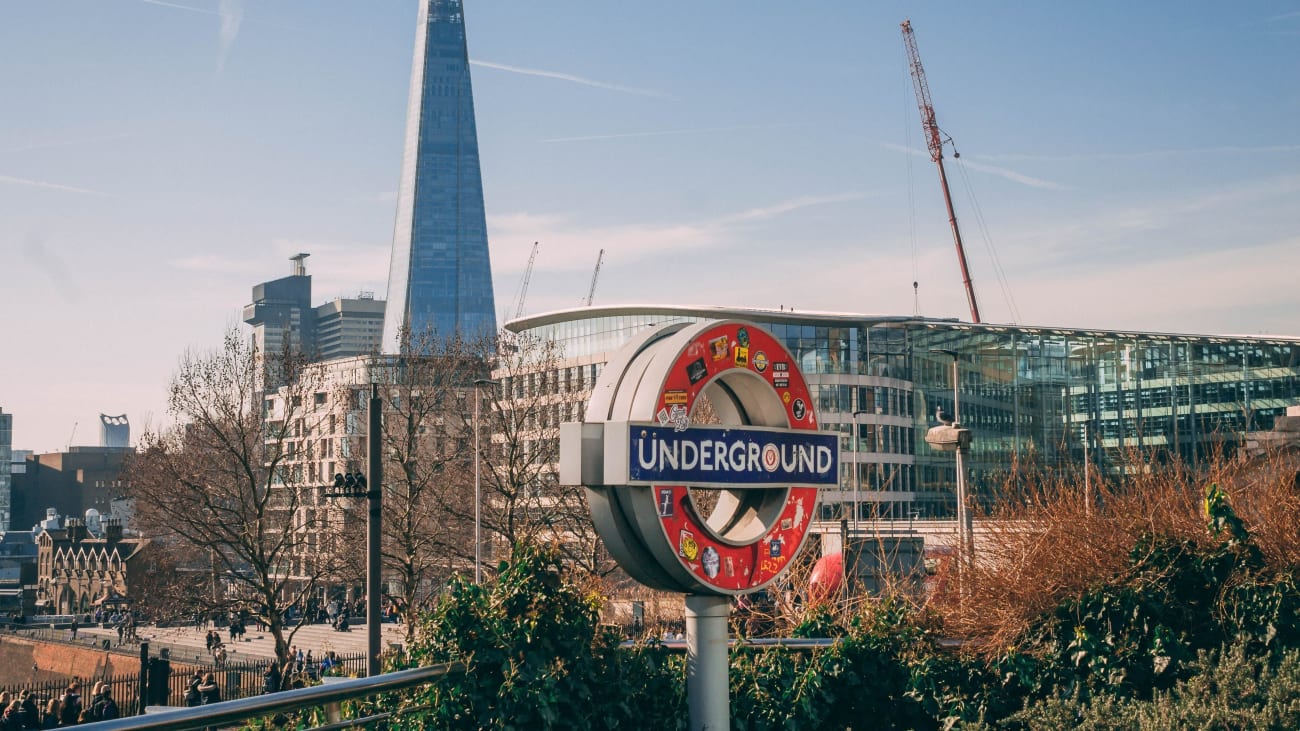
London, United Kingdom | ©Diane Picchiottino
Travelling on the London Underground can seem a bit complicated at first with so many lines and stops, but as soon as you get familiar with it and get the hang of it you will see that using it is quite intuitive.
To make it easier for you to get around the London Underground, in this guide I tell you everything you need to know about how it works, its timetables, the tickets that exist, how to buy them and more. You will see how you will end up moving around the British capital like a Londoner!
Get a London Underground map
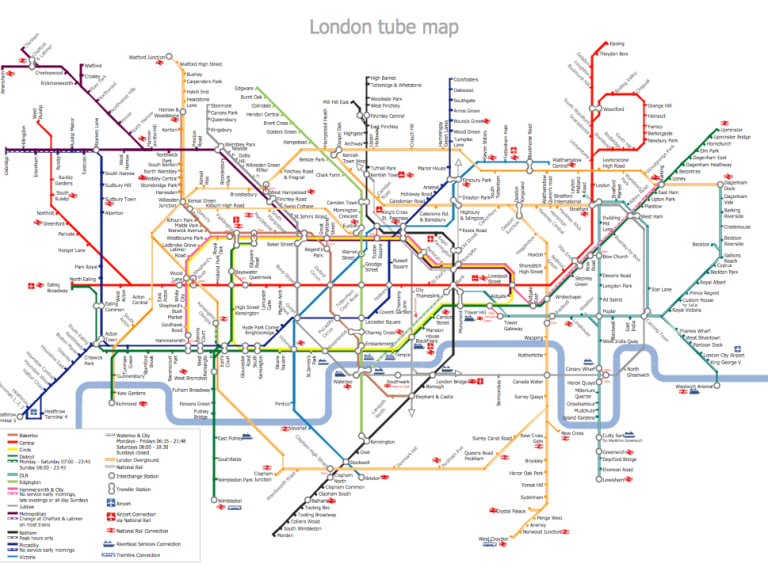
Being one of the most extensive in the world, the London Underground connects very well the different points of the British capital and connects with most of the tourist attractions in London so it is certain that at some point during your stay you will use it to move around.
I recommend you to download a London Underground map in PDF on your cell phone, so you can always carry it in your pocket and take a look at it whenever you need it. Even in those moments when you do not have Internet access.
Another option I suggest is to download the official Transport for London app (available on iOS and Android), where in addition to the subway map you can also search for routes and directions in the city to plan your trips, see the quietest times to travel, check live bus and train schedules and see the latest updates on the transport network.
How much does the ticket cost? How does the London Underground work?
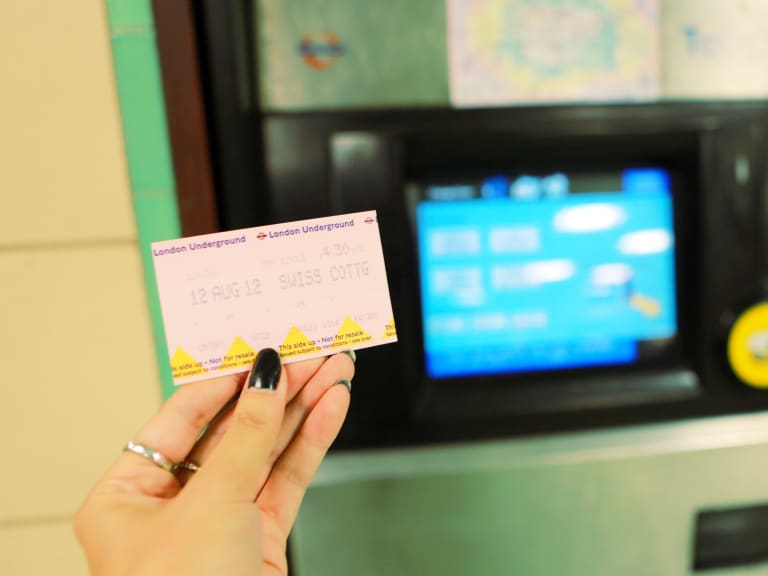
The London Underground is divided into 9 radial areas starting in the historic center and covering almost the entire city. Most of the main tourist attractions of the British capital are located in zones 1 and 2, where you will probably move all the time unless you are staying far from the center.
The price of a single tube ticket if you pay in cash is quite high, exactly 6.70 pounds, regardless of the zone you travel to and without taking into account the peak times of the subway. There is a more convenient method of payment which is with the contactless system, either with your cell phone or with a credit or debit card, which applies a cheaper rate. That is:
- Single ticket: has more expensive fixed price (£6.70), does not distinguish zones or rush hours and is paid in cash at ticket offices or vending machines.
- Contactless: fare from £2.80 (off-peak) or £3.40 (peak) in zones 1-2, with prices varying according to zones and times, and automatic daily and weekly limits. Pay by card or cell phone at the turnstiles.
To find out the exact cost of the journey before you travel I recommend you visit the Transport for London website where you will find all the updated fares. From an economic point of view it is not very advisable to buy a single ticket if you are going to spend several days in the city and plan to use the subway frequently. It is also not recommended in terms of time because you will have to stop at the vending machines to buy it every time you want to use it.
As for the contactless system, it is much more economical and practical because you don't need to recharge with credit or purchase a special card. Although logically you must have a card or cell phone compatible with this method.
Are there season tickets to use the London Underground?
Fortunately there are other alternatives to the single ticket to use on the London Underground that will help you save money on your trips around the city: the Oyster Card, the Travelcard or the Visitor Oyster Card.
The Oyster Card
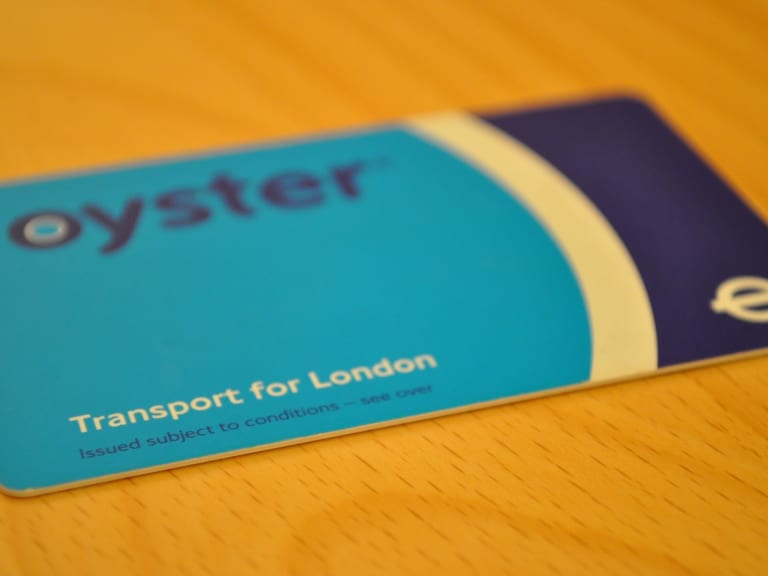
The Oyster Card is a rechargeable card with a balance that makes transport fares cheaper than buying a single ticket. As you use the card to travel on the London Underground, the balance will be deducted from the card.
During peak hours the 'peak fare' applies Monday to Friday between 6.30am and 9.30am and 4pm and 7pm while the 'off peak' fare applies at all other times, weekends and public holidays.
How to buy an Oyster Card?
You can buy your Oyster Card in the vending machines of any subway station in the city. The good thing about this system is that if you are not too fluent in English you can change the language of the machine to your own and follow the steps that it indicates. This way there will be no confusion. You just choose the amount to put on the card, then the method of payment and that's it!
And to recharge it, it's very simple. It is done in the same machines where you buy the Oyster Card and can be recharged with a bank card or cash. No more complications.
How do I use it?
To access the London Underground with an Oyster Card you have to pass it through the yellow sensor on the turnstile both at the entrance and exit. This last step is essential, even if you find the turnstile doors open because the Oyster Card calculates the fare when you swipe the card to exit.
If you forget to do this, the card will detect the journey as incomplete and will not be able to calculate your journey, so you will be penalized in your balance.
Summary of how the Oyster Card works
The Oyster Card currently costs £7, which is non-refundable. It is a reloadable card to pay for travel on public transport in London at cheaper fares than paper tickets and with daily limits to reduce costs. The card does not expire and can be reused on future visits.
In short:
- Initial cost: £7 (non-refundable).
- Recharge: Add balance at machines, ticket offices or online.
- Daily Cap: Guarantees that you will not pay more than a daily maximum based on zones travelled.
- Prices similar to Contactless: From £2.80 (zones 1-2 off-peak).
- Easy to use: Tap the card on the readers when entering and exiting transport.
- Non-expiring: You can reuse it on future visits to London.
This card is ideal for those who do not have Contactless cards or prefer a dedicated method of transport.
The Travelcard
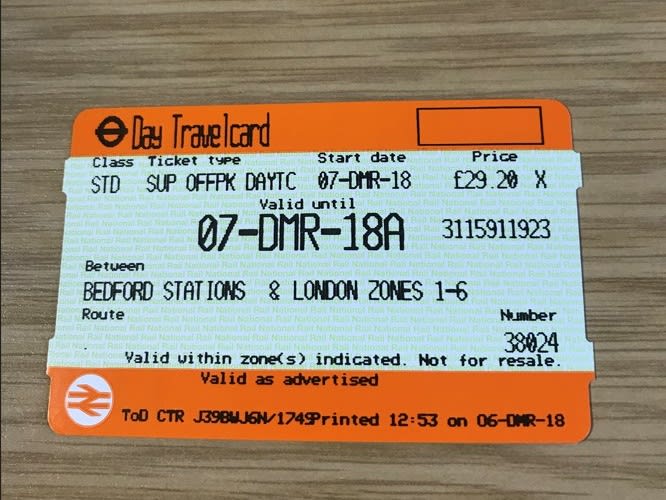
The Travelcard is another alternative to the single ticket and the Oyster Card to travel on the London Underground. It consists of a card with which you can travel unlimited travel on the London public transport network for a certain period of time.
Although there are monthly and annual Travelcards, these are intended for residents of the British capital while for tourists are sold Travelcard 1 day and 7 days.
How to buy a Travelcard?
To buy a Travelcard there are many facilities as they can be obtained at different points of sale. Depending on the place this card will be given to you in one format or another.
- Railway stations: It is issued at the National Rail counters as a printed cardboard ticket. To purchase a 7-day Travelcard here you will have to provide a passport photo. It is an interesting option because with it you can get 2 for 1 discounts on several attractions such as tickets to St. Paul's Cathedral or the Madame Tussauds Museum.
- Subway stations: Here you can purchase the 1-day Travelcard. If you wish to purchase the 7-day Travelcard, you will receive it loaded on an Oyster Card. Unlike the National Rail Travelcard, it is issued by the London Underground company and with it you can not get the 2 for 1 discounts at tourist attractions.
How is the Travelcard used?
While the Oyster Card is plastic and must be slid through the yellow reader on the turnstile to gain access, the Travelcard is cardboard and must be swiped through the slots on the turnstile both at the entrance and exit.
Which card to choose: the Oyster Card or the Travelcard?
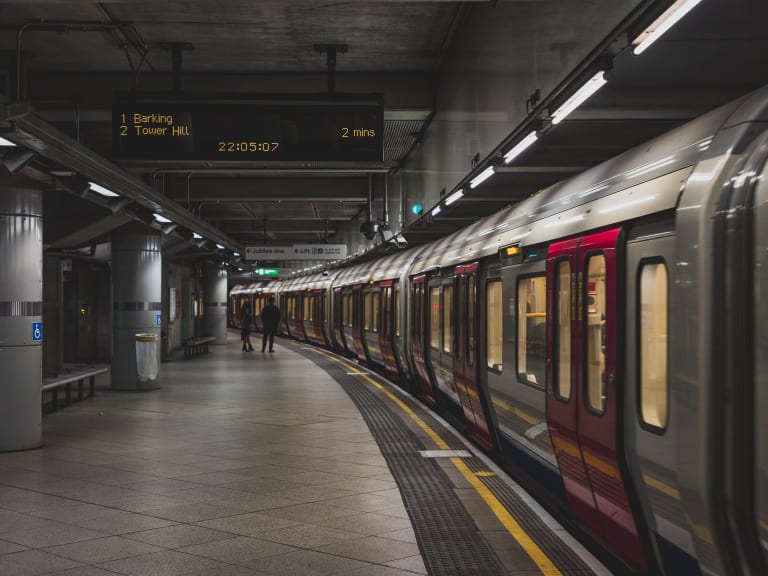
The million dollar question! Choosing between an Oyster Card or Travelcard will depend on the length of your stay in London and how often you will be using the Underground. For example, if you plan to ride the tube two to four times a day for short periods of time such as four days in London or five days in London, or you want to travel to the outskirts of London, it is best to opt for an Oyster Card with balance ("Pay as you go"), as you can benefit from the "daily cap".
This is a system that works for a period of 24 hours and there is a maximum spending limit per day depending on the zones. Every time you make a trip on the subway you will be deducted until you reach that limit and from that moment on your trips will be free because no more credit will be deducted from the Oyster Card.
However, if you plan to spend a week or more in London and you are going to take the subway to move around the central area continuously, then the most profitable option is to choose a 7-day Travelcard.
Can I share an Oyster Card or Travelcard with another person on the same trip?
No, it is not possible. If you travel to London together with another person each of you must have your own Oyster Card or Travelcard but if in the future you travel separately you can lend or share them because in case of acquiring them in the subway stations none of these cards is associated with an identity document or a name.
Visitor Oyster Card
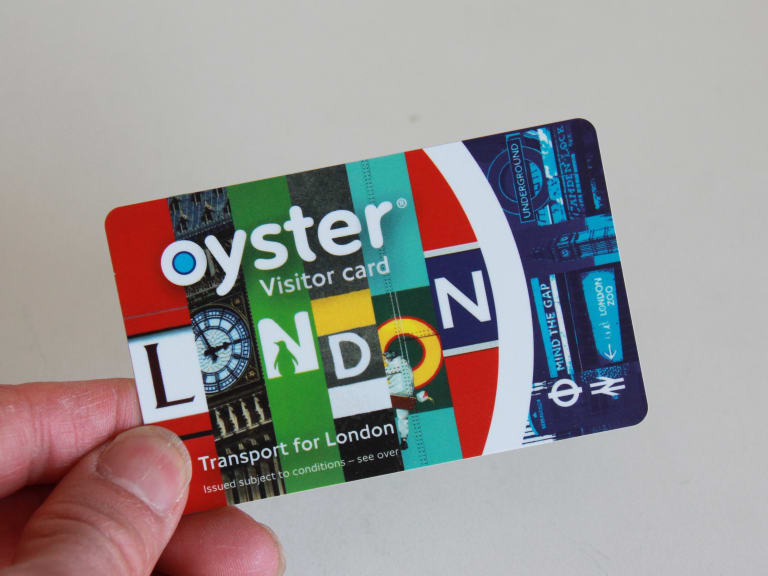
The Visitor Oyster Card is a card similar to the traditional Oyster Card, but unlike the Oyster Card, it has been designed specifically for tourists. It offers cheaper fares than paper tickets and daily limits that control maximum spending. It costs £5 (non-refundable) and comes with pre-loaded credit that you can choose from £10 to £50. The card can be purchased prior to travel and is not available for purchase within London.
Key benefits:
- Economy pricing: lower fares and daily limit (e.g. £8.10 in zones 1-2).
- Credit options: £10, £15, £20, £25, £30, £40 or £50 depending on the length of your stay.
- Additional discounts: 10% on Thames Clippers River Bus and Thames tours.
- Reusable: No expiration date; you can use it on future visits or borrow it.
What is the London Underground timetable?
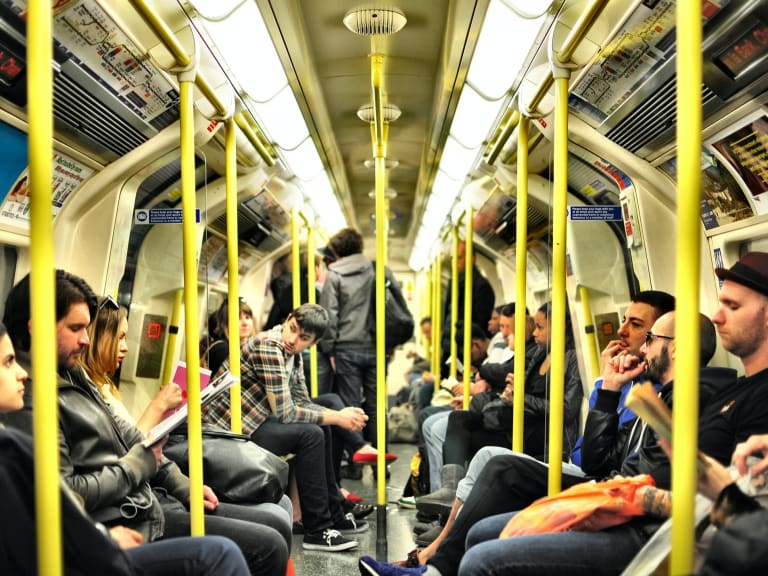
The Underground is open Monday to Saturday from 5am to midnight and from 7am to 11.30pm on Sundays, when the first and last train of each line departs. This means, for example, that if a train departs at midnight it will be running until it reaches the last stop on the line. On weekends (Fridays and Saturdays) the London Underground schedule is extended on some lines (Piccadilly, Central, Jubilee or Northern) and are open 24 hours.
As a curiosity, London public transport closes on December 25. On Christmas Eve evening, the service starts to be reduced and there are no night buses. This recovers its operation on December 26 ("Boxing Day") but in a reduced way. Keep this in mind if you plan to spend Christmas in London.
The frequency of trains is very high, 2 or 3 minutes and, in general, there are usually no delays in the service, so the London Underground is one of the best ways to move around the city.
Do children pay a ticket on the London Underground?
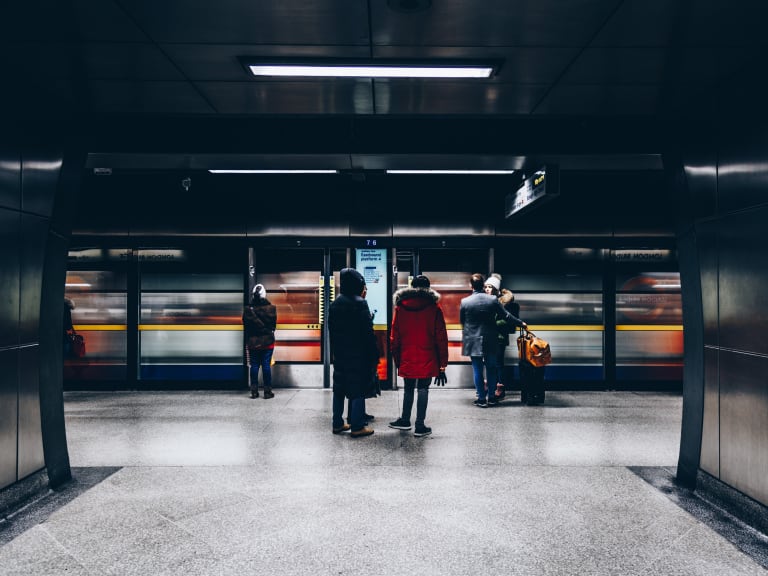
- Children under the age of 11 can travel for free on London Transport as long as they are accompanied by an adult, who can enter with a maximum of 4 children.
- Children aged 11-15 can ride free on streetcars and buses and get discounts on all other transport such as the Underground, London Overground, TfL Rail and DLR if they have a Zip Oyster 11-15 photocard.
- Teenagers aged 16 and 17 can purchase a Zip Oyster +16 card with which they can travel free or benefit from discounts on London transport. For example, 50% off adult 'pay as you go' fares on the Underground, bus, TfL Rail, London Overground, DLR and most National Rail services in London.
How many lines are there on the London Underground?

The London Underground consists of 11 lines and 274 stations covering more than 1,500 square meters, almost the entire city. In addition to the "official" lines there are two others: the DLR (driverless light rail trains that run in the east and southeast of the British capital) and the London Overground (a line that runs on the surface in the north and northwest of the city).
The London Underground lines are:
- Bakerloo, brown line.
- Central, red line.
- Circle, yellow line.
- District, green line.
- Hammersmith & City, pink line.
- Jubilee, grey line.
- Metropolitan, purple line.
- Northern, black line.
- Piccadilly, dark blue line.
- Victoria, light blue line.
- Waterloo & City, blue-green line.
Tips for traveling by subway
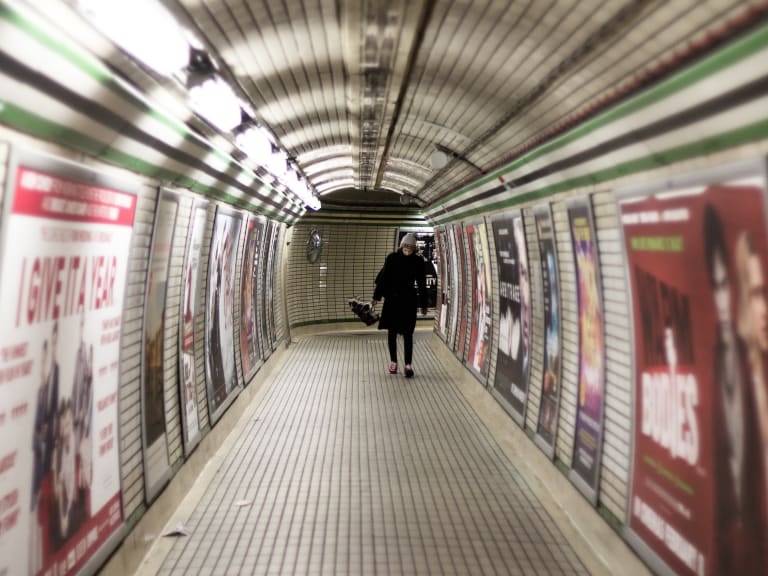
- Have your ticket handy to get through the turnstiles quickly especially if you are taking the tube at rush hour (before 9:30 am or around 6 pm) to facilitate the flow of passengers at the entrances and exits of the station.
- If you can, plan your off-peak transfers on the London Underground. It is usually crowded with commuters coming and going from all corners of the capital. This is especially true between 6:30 am and 9:30 am as well as between 5 and 7 pm. This way you will move through the subway with more tranquility.
- Check the London Underground app or website before you travel to see if there are any incidents on the lines you want to take or some stations are closed for maintenance work. It will provide you with updated service information and even provide alternative routes.
- Move around the platform to find more space. When you get to the platform, don't crowd at the entrance. If you see that there are a lot of people on a section of the platform, keep walking to where there are fewer people. This way you may even find a free seat if you want to sit down.
- Let yourself out of the car before entering. You will be able to enter more easily and without being pushed by other passengers.
- "Mind the gap! For safety, always stand behind the yellow strip on the floor when waiting on the platform and pay attention to the gap between the carriage and the platform when entering or leaving.
- Keep an eye on your belongings in the subway. Beware of pickpockets as in any other city and be sure to keep your valuables safe during the ride.
- If you miss a station or get on the wrong line, don't worry, trains run frequently, so just get off at the next station and check the map carefully to find the right way.
- London Underground trains run every 2-7 minutes, depending on the line, so just get off at the next stop and look for a tube map on the platform to guide you.
- Stand on the right side of the escalators and leave the left side free for those who want to walk up the escalators more quickly.
- If you are traveling with children or luggage you must use the appropriate access on the London Underground. In all stations there are turnstiles with a wider passage and whose doors take longer to close to facilitate access.
- If you have any doubts, do not hesitate to ask for help to the London Underground staff or any other user, they will surely give you a hand if you need it!
